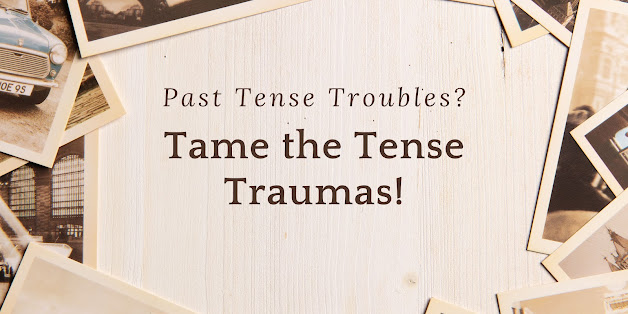Ah, the past tense. It whisks us back to thrilling triumphs and cringe-worthy blunders, all within the realm of grammar. But here's the thing: using the past tense correctly can feel like navigating a time travel movie gone wrong. Fear not, fellow wordsmiths! This guide is your DeLorean (minus the flux capacitor) to mastering past tense in English.
We'll unveil the most common mistakes that trip us up, equip you with easy-to-remember tricks, and have you rocking the past tense like a seasoned time traveler.
The Usual Suspects: Past Tense Mistakes We All Make
- Verb Tense Tango: Mixing Up Simple Past and Past Perfect
Imagine this: You ate (simple past) breakfast before you left (simple past) for work. Now, let's say you had eaten (past perfect) breakfast by the time your colleague arrived (past simple). See the difference?
- Simple Past: Describes actions completed in a specific time in the past. (e.g., I went to the store yesterday.)
- Past Perfect: Shows an action that happened before another past action. (e.g., I had finished my work by the time you called.)
Memory Trick: Think of the past perfect as having an "already" built-in. I had already eaten breakfast before you arrived.
- The "Did" Dilemma: Overusing or Forgetting It
Did you know "did" plays a starring role in negative and question sentences in the simple past? Here's the breakdown:
- Positive: I went to the beach.
- Negative: I did not go (or "didn't go") to the beach.
- Question: Did you go to the beach?
Tip: If you start your sentence with the subject (e.g., "I"), you'll need "did" in negative and question forms.
- Irregular Verbs: Those Pesky Shape-Shifters
English loves throwing irregular verbs into the mix. These verbs don't follow the usual -ed ending for the past tense (e.g., go - went, eat - ate).
- Conquer them with flashcards: Write the present tense verb on one side and the past tense on the other. Practice regularly, and those irregular verbs won't stand a chance!
- Embrace online resources: There are many websites and apps dedicated to helping you learn irregular verbs.
- Time Travel Tense Trouble: Confusing Past Continuous with Simple Past
The past continuous describes an ongoing action in the past, while the simple past describes a completed action. Here's how to tell them apart:
- Past Continuous: I was walking the dog when I saw you. (The walking was happening as you saw the person.)
- Simple Past: I walked the dog earlier. (The walking is a completed action in the past.)
Remember: The past continuous often uses "was/were + verb-ing" and often goes with time expressions like "while," "when," or "as."
Bonus Round: Past Tense Pitfalls to Avoid
- Misusing "used to": "Used to" describes habits or states that are no longer true in the present. Don't use it for ongoing actions. (Incorrect: I used to like pizza, but now I do. Correct: I liked pizza as a kid, but now I prefer tacos.)
- Verb tense inconsistency: Make sure all your verbs in a sentence agree in tense. (Incorrect: Yesterday, I went to the store and buy a new book. Correct: Yesterday, I went to the store and bought a new book.)
Mastering the Past Tense: Your Time Travel Toolkit
- Practice Makes Perfect: Write short stories or dialogues using the past tense. You can even rewrite a favorite scene from a movie in the past tense!
- Read Like a Time Traveler: Immerse yourself in books and articles written in the past tense. Pay attention to how authors use different tenses to tell their stories.
- Online Games and Quizzes: Make learning fun! There are many interactive quizzes and games that can help you test your past tense skills.
So, the next time you find yourself wrestling with the past tense, remember, you're not alone. With a little practice and these handy tips, you'll be navigating the past like a seasoned time traveler, leaving a trail of grammatically correct sentences in your wake.






0 Comments